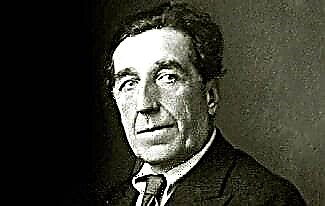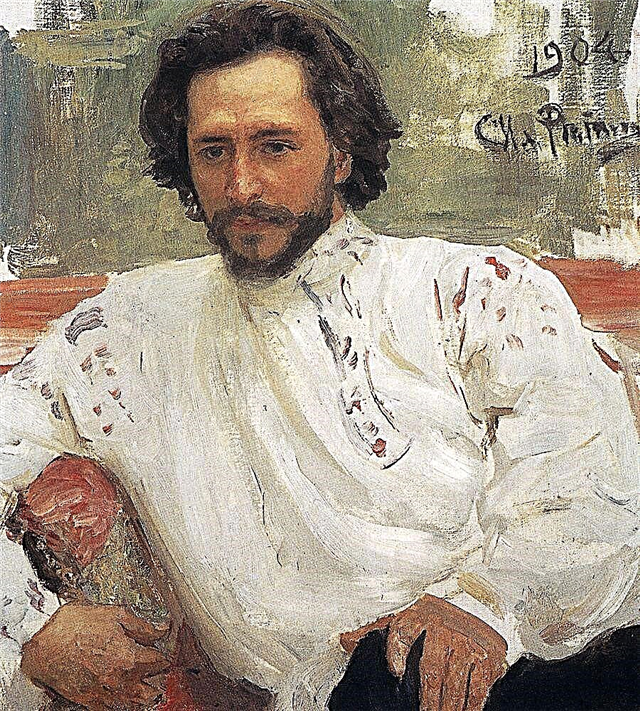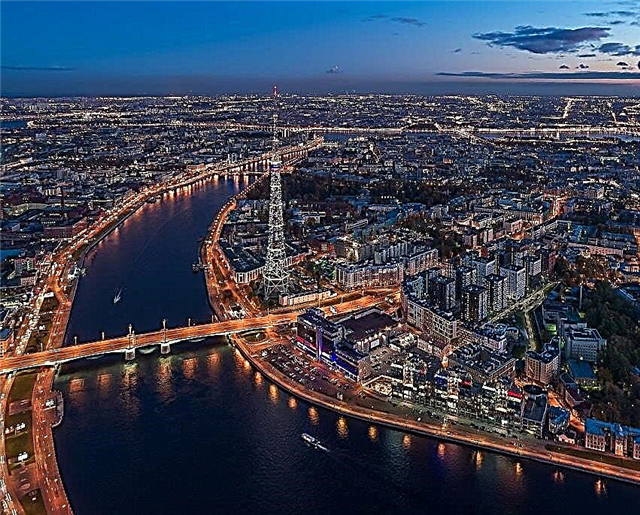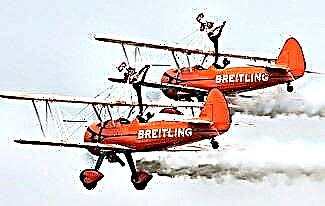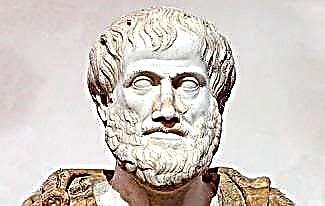In the late Soviet Union, before the liberalization of foreign travel, a tourist trip abroad was both a dream and a curse. A dream, because what person doesn't want to visit other countries, meet new people, learn about new cultures. A curse, because a person who wants to go abroad doomed himself to many bureaucratic procedures. His life was studied under a microscope, checks took a lot of time and nerves. And abroad, in the event of a positive outcome of the checks, contacts with foreigners were not recommended, and almost always it was necessary to visit pre-approved places as part of a group.

But, nevertheless, many tried to get abroad at least once. In principle, except for the senseless verification procedure, the state was not against it. The tourist flow was steadily and noticeably growing, the shortcomings, as far as possible, tried to eliminate. As a result, in the 1980s, more than 4 million citizens of the USSR traveled abroad in tourist groups a year. Like many others, Soviet foreign tourism had its own characteristics.
1. Until 1955, there was no organized outbound foreign tourism in the Soviet Union. Joint-stock company "Intourist" existed since 1929, but its employees were exclusively engaged in servicing foreigners who came to the USSR. By the way, there were not so few of them - in the peak of 1936, 13.5 thousand foreign tourists visited the USSR. Assessing this figure, one should take into account that foreign travel in those years around the world was the exclusive privilege of rich people. Mass tourism appeared much later.

2. The trial balloon was a sea cruise on the route Leningrad - Moscow with a call to Danzig, Hamburg, Naples, Constantinople and Odessa. 257 leaders of the first five-year plan made a trip on the motor ship “Abkhazia”. A similar cruise took place a year later. These trips did not become regular - in fact, the built ships - in the second case, it was "Ukraine" was ferried from Leningrad to the Black Sea, simultaneously loaded with leading workers.
3. Movements with the search for opportunities to organize collective trips of Soviet citizens abroad began at the end of 1953. For two years there was a leisurely correspondence between the departments and the Central Committee of the CPSU. Only in the fall of 1955, a group of 38 people went to Sweden.
4. Control over the selection of candidates was carried out by party bodies at the level of party committees of enterprises, district committees, city committees and regional committees of the CPSU. Moreover, the CPSU Central Committee in a special decree prescribed only selection at the enterprise level, all other checks were local initiatives. In 1955, instructions on the conduct of Soviet citizens abroad were approved. The instructions for those traveling to socialist and capitalist countries were different and were approved by separate resolutions.
5. Those intending to go abroad underwent several thorough checks, and regardless of whether a Soviet person was traveling to admire the prosperous socialist countries or be horrified by the order of the capitalist countries. A long special questionnaire was filled in with questions in the spirit of "Did you live in the occupied territory during the Great Patriotic War?" It was required to take a testimonial in a trade union organization, to pass a check in the State Security Committee (KGB), an interview in party bodies. Moreover, the checks were not carried out in the usual negative character (they were not, were not, were not involved, etc.). It was necessary to indicate their positive qualities - from partisanship and participation in subbotniks to classes in sports clubs. The reviewing commissions also paid attention to the marital status of the candidates for the trip. Candidates that passed the lower levels of selection were considered by the Commissions on the departure, created in all regional committees of the CPSU.
6. The future tourists who passed all the checks underwent various instructions on behavior abroad and communication with foreigners. There were no formalized instructions, so somewhere girls could take mini-skirts with them, and demand from the Komsomol delegation that participants constantly wear Komsomol badges. In the groups, a special subgroup was usually singled out, the participants of which were taught to answer possible tricky questions (Why do newspapers trumpet about the development of agriculture, while the Soviet Union buys grain from America?). Almost without fail, groups of Soviet tourists visited memorable places associated with leaders of the communist movement or revolutionary events - monuments to V.I. Lenin, museums or memorials. The text of the entry in the book of visits to such places was approved back in the USSR, the entry had to be made by an approved group member.
7. Only in 1977 was the brochure “USSR. 100 questions and answers ”. A rather sensible collection was reprinted several times - the answers from it differed quite seriously from the party propaganda that was completely emasculated by that time.
8. Having passed all the checks, the documents for a trip to a socialist country had to be submitted 3 months before the trip, and to a capitalist country - six months before. Even the notorious geography experts of Luxembourg did not know about the Schengen village at that time.

9. A foreign passport was issued exclusively in exchange for a civil one, that is, one could have only one document on hand. It was forbidden to take any documents abroad, except for a passport, proving identity, and in the USSR, it was not certified except by sick leave and certificates from the housing office.
10. In addition to formal prohibitions, there were informal restrictions. For example, it was very rare - and only with the approval of the Central Committee - that a husband and wife traveled as part of the same group if they did not have children. One could travel to capitalist countries once every three years.
11. Knowledge of foreign languages was by no means considered a plus for a candidate for a trip. On the contrary, the presence of several people in the group who spoke a foreign language at once caused serious concerns. Such groups sought to dilute socially or nationally - to add workers or representatives of the national borderlands to the intelligentsia.
12. After going through all the circles of the party-bureaucratic hell and even paying for the trip (and they were very expensive by Soviet standards, and only in rare cases the enterprise was allowed to pay up to 30% of the cost), it was quite possible not to go to it. "Intourist" and the trade union bodies worked neither wobbly nor roll. The number of groups that did not go abroad through the fault of Soviet structures went into dozens every year. During the period of normalization of relations with China, sometimes they did not manage to formalize and canceled whole “Trains of Friendship”.
13. Nevertheless, despite all the difficulties, groups of Soviet tourists visited almost the entire world. For example, immediately after the organization of outbound tourism began, in 1956, Intourist's clients visited 61 countries, and 7 years later - 106 foreign countries. It is understood that most of these countries have been visited by tourists on cruises. For example, there was a cruise route Odessa - Turkey - Greece - Italy - Morocco - Senegal - Liberia - Nigeria - Ghana - Sierra Leone - Odessa. Cruise ships carried tourists to India, Japan and Cuba. The cruise of Semyon Semyonovich Gorbunkov from the film “The Diamond Arm” could be quite real - when selling vouchers for sea cruises, the tradition of “Abkhazia” was observed - priority was given to the foremost workers.

14. Talk about “tourists in civilian clothes” - KGB officers allegedly attached to almost every Soviet tourist who went abroad, is most likely an exaggeration. At least from the archival documents it is known that Intourist and Sputnik (another Soviet organization engaged in outbound tourism, mainly youth) experienced an acute shortage of personnel. There was a shortage of translators, guides (remember once again the “Diamond Hand” - a Russian emigrant was the guide), just qualified accompanying people. Soviet people traveled abroad in hundreds of thousands. In the starting year 1956, 560,000 people visited foreign countries. From 1965 the bill went into the millions until it hit 4.5 million in 1985. Of course, KGB officers were present on tourist trips, but not in every group.
15. Apart from the occasional escapes of the intelligentsia, artists and athletes, ordinary Soviet tourists rarely gave cause for concern. Particularly principled group leaders recorded violations, in addition to trivial drinking of alcohol, loud laughter in a restaurant, the appearance of women in trousers, refusal to visit the theater and other trifles.
16. Prominent “defectors” in tour groups were rare - they mostly stayed in the West after traveling for work. The only exception is the famous literary critic Arkady Belinkovich, who escaped with his wife during a tourist trip.
17. Vouchers abroad, as already mentioned, were expensive. In the 1960s, with a salary in the region of 80 - 150 rubles, even a 9-day tour to Czechoslovakia without a road (120 rubles) cost 110 rubles. A 15-day trip to India cost 430 rubles plus over 200 rubles for air tickets. Cruises were even more expensive. Travel to West Africa and back cost 600 - 800 rubles. Even 20 days in Bulgaria cost 250 rubles, while a similar preferential trade union ticket to Sochi or Crimea cost 20 rubles. The chic route Moscow - Cuba - Brazil was a record price - the ticket cost 1214 rubles.
18. Despite the high cost and bureaucratic difficulties, there were always those who wanted to go abroad. The overseas tour gradually (already in the 1970s) acquired a status value. Periodic checks uncovered large-scale violations in their distribution. The audit reports feature facts seemingly impossible in the Soviet Union. For example, a Moscow auto mechanic took three cruises to capitalist countries in six years, although this was prohibited. The vouchers intended for workers or collective farmers, for some reason, went to directors of markets and department stores. At the same time, from the point of view of the crime, nothing serious happened - official negligence, nothing more.
19. If ordinary citizens treated a trip to Bulgaria in the spirit of the well-known saying that denies a chicken the right to be called a bird, and Bulgaria - abroad, then for the group leaders the trip to Bulgaria was hard labor. In order not to go into details for a long time, it is easier to explain the situation with an example from modern times. You are the leader of a group of mostly women vacationing in a Turkish or Egyptian resort. Moreover, your task is not only to bring your wards home safe and sound, but also to observe their morality and communist morality in every possible way. And Bulgarians by temperament are practically the same Turks, only they live a little further north.
20. Currency was a huge problem on foreign travel. They changed it very little. In the worst situation were the tourists traveling on the so-called “non-currency exchange”. They were provided with free housing, accommodation and services, so they changed very penny sums - enough only for cigarettes, for example. But the others were not spoiled either. Therefore, the full norm of goods allowed for export was transported abroad: 400 grams of caviar, a liter of vodka, a block of cigarettes. Even radios and cameras were declared and had to be brought back. Women were allowed to wear no more than three rings, including a wedding ring. Everything that was available was sold or exchanged for consumer goods.

